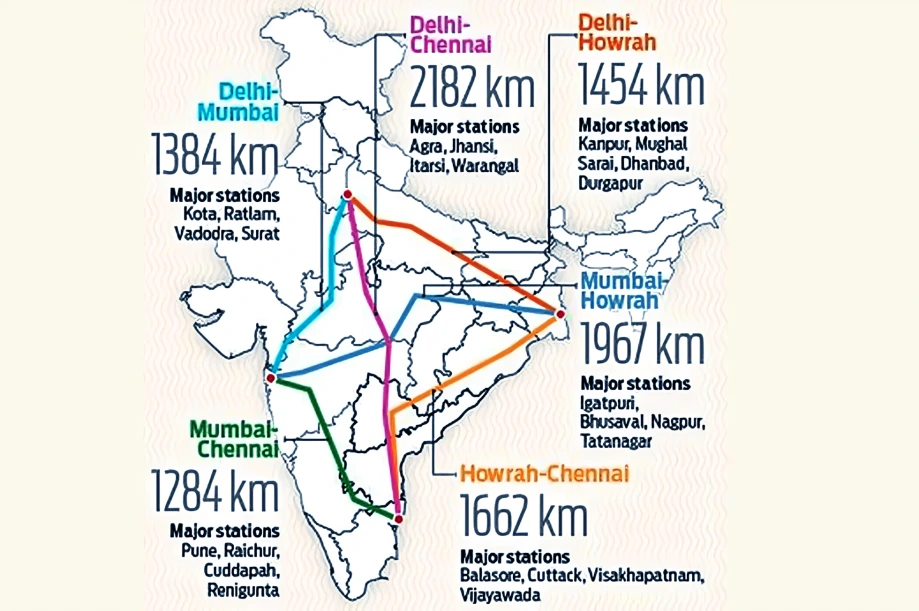Context: This editorial is based on the news “Siliguri corridor as a bridge to East Asia” which was published in the Hindustan Times. The world is facing the escalating threats to maritime security in the Red Sea region following the actions of Houthi militants of Yemen.
About the Siliguri Corridor

- A Narrow Stretch of Land: The Siliguri Corridor, or Chicken’s neck, is a narrow stretch of land located in West Bengal, that connects India’s northeastern states to the rest of India.
- Connects: It is the only part of India that is physically linked to four different countries- Nepal, Bhutan, Bangladesh, and China.
- It is also a corridor that ultimately connects India to Southeast Asia and East Asia through Myanmar.
Siliguri Corridor: Its Significance
- Siliguri corridor has its military significance and has its vulnerability due to its narrowness.
- It is a heavily defended part of the country with a major, and expanding, concentration of military force and rapidly improving logistics and connectivity.
- Strategically Important & Highly Sensitive Territory: As it remains the only bridge between the eight north-eastern states of India and the rest of the country.
 Geopolitical Significance: Here the Neighbourhood First and Act East policies intersect.
Geopolitical Significance: Here the Neighbourhood First and Act East policies intersect.
- It connects the Association of SouthEast Asian Nations to the Bay of Bengal Initiative for Multi-Sectoral Technical and Economic Cooperation (BIMSTEC) and the South Asian Association for Regional Cooperation. This is, therefore, in a sense, where the Indo-Pacific begins.
- In Siliguri, the National Highways Authority of India’s “Golden Quadrilateral” will connect to the Asian Highway network and future BIMSTEC land connectivity initiatives.
Must Read: China-Bhutan Boundary Talks
Development of the Siliguri Corridor
- Improvement in Infrastructure: In bridges, roads, railways, air connectivity and waterways.
- Improvement in Facilities: Increasing number of educational institutions, growth of medical facilities, and augmentation of social capital through improved socio- economic outcomes.
- Economic Gains: The Siliguri-Bagdogra area presents a compelling economic proposition.
The Potential Ahead
- Further Improvement of Links: Links between India and Bangladesh, Nepal and Bhutan will inevitably boost up the likelihood of this area developing as a transport economy hub and trans-shipment point.
- Development & Economic Growth: Darjeeling has always been a center for education. Its schools and colleges have sterling reputations in India and the countries adjoining it that can be used to create an educational, training, and skilling hub for students.
- Medical Hub: India’s medical capacities are growing and there will be an increase in demand for a whole spectrum of medical services from India to Bangladesh, Nepal and Bhutan.
- Tourism Boost: The Airports Authority of India working on a project for modernizing Bagdogra airport. An improved airport will mean expansion of the tourism industry.
- The G20 events that were held in Darjeeling confirmed this enormous potential.
- A Surge of Industrialisation: With the completion of the North East Grid Natural Gas Pipeline Project from Siliguri to Gangtok, industrialisation will reshape.
- Collaborative Exploration: The US-India Strategic Partnership Forum emphasized on the strengths in the tea and tourism industry and the “plethora of unexplored opportunities and untapped potential in fields of agriculture, infrastructure, and renewable energy”.
Conclusion
The strategic Siliguri Corridor must be carefully monitored to not only ensure its development to the fullest potential but also to safeguard the security interest of the nation. The combination of human capital and location when linked to an enabling environment results in the development of the region.
![]() 4 Jan 2024
4 Jan 2024


 Geopolitical Significance: Here the Neighbourhood First and Act East policies intersect.
Geopolitical Significance: Here the Neighbourhood First and Act East policies intersect.
